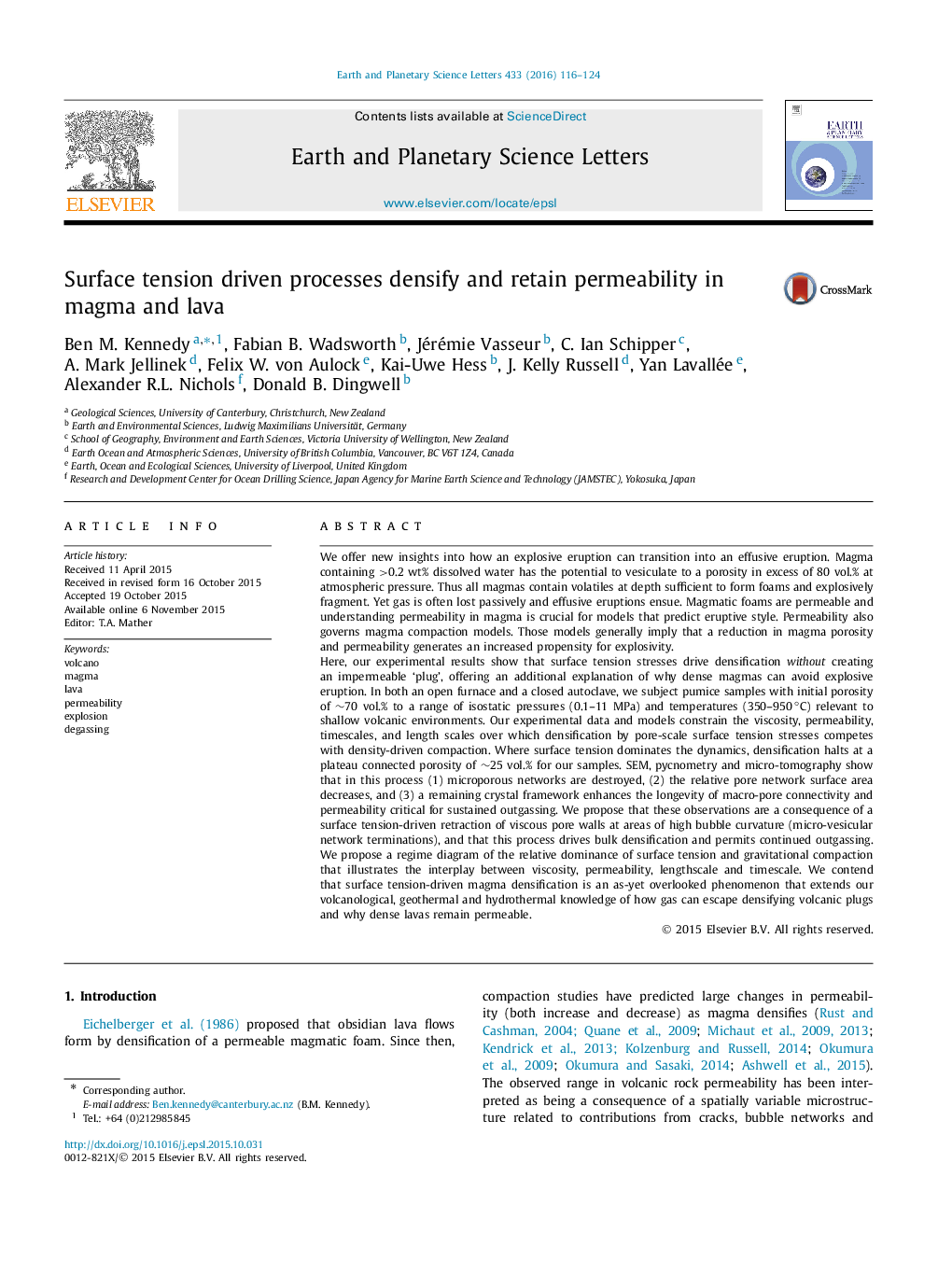| کد مقاله | کد نشریه | سال انتشار | مقاله انگلیسی | نسخه تمام متن |
|---|---|---|---|---|
| 6427690 | 1634723 | 2016 | 9 صفحه PDF | دانلود رایگان |
- We offer an additional explanation as to how bubbly magma densifies to become lava.
- Magmas can have the same permeability and different porosity, without necessitating cracking.
- Our data demonstrates that surface tension can densify and deform magma.
- Micro-tomography tracks and quantifies change in pore structure following experimentation.
We offer new insights into how an explosive eruption can transition into an effusive eruption. Magma containing >0.2 wt% dissolved water has the potential to vesiculate to a porosity in excess of 80 vol.% at atmospheric pressure. Thus all magmas contain volatiles at depth sufficient to form foams and explosively fragment. Yet gas is often lost passively and effusive eruptions ensue. Magmatic foams are permeable and understanding permeability in magma is crucial for models that predict eruptive style. Permeability also governs magma compaction models. Those models generally imply that a reduction in magma porosity and permeability generates an increased propensity for explosivity.Here, our experimental results show that surface tension stresses drive densification without creating an impermeable 'plug', offering an additional explanation of why dense magmas can avoid explosive eruption. In both an open furnace and a closed autoclave, we subject pumice samples with initial porosity of â¼70 vol.% to a range of isostatic pressures (0.1-11 MPa) and temperatures (350-950â°C) relevant to shallow volcanic environments. Our experimental data and models constrain the viscosity, permeability, timescales, and length scales over which densification by pore-scale surface tension stresses competes with density-driven compaction. Where surface tension dominates the dynamics, densification halts at a plateau connected porosity of â¼25 vol.% for our samples. SEM, pycnometry and micro-tomography show that in this process (1) microporous networks are destroyed, (2) the relative pore network surface area decreases, and (3) a remaining crystal framework enhances the longevity of macro-pore connectivity and permeability critical for sustained outgassing. We propose that these observations are a consequence of a surface tension-driven retraction of viscous pore walls at areas of high bubble curvature (micro-vesicular network terminations), and that this process drives bulk densification and permits continued outgassing. We propose a regime diagram of the relative dominance of surface tension and gravitational compaction that illustrates the interplay between viscosity, permeability, lengthscale and timescale. We contend that surface tension-driven magma densification is an as-yet overlooked phenomenon that extends our volcanological, geothermal and hydrothermal knowledge of how gas can escape densifying volcanic plugs and why dense lavas remain permeable.
Journal: Earth and Planetary Science Letters - Volume 433, 1 January 2016, Pages 116-124
